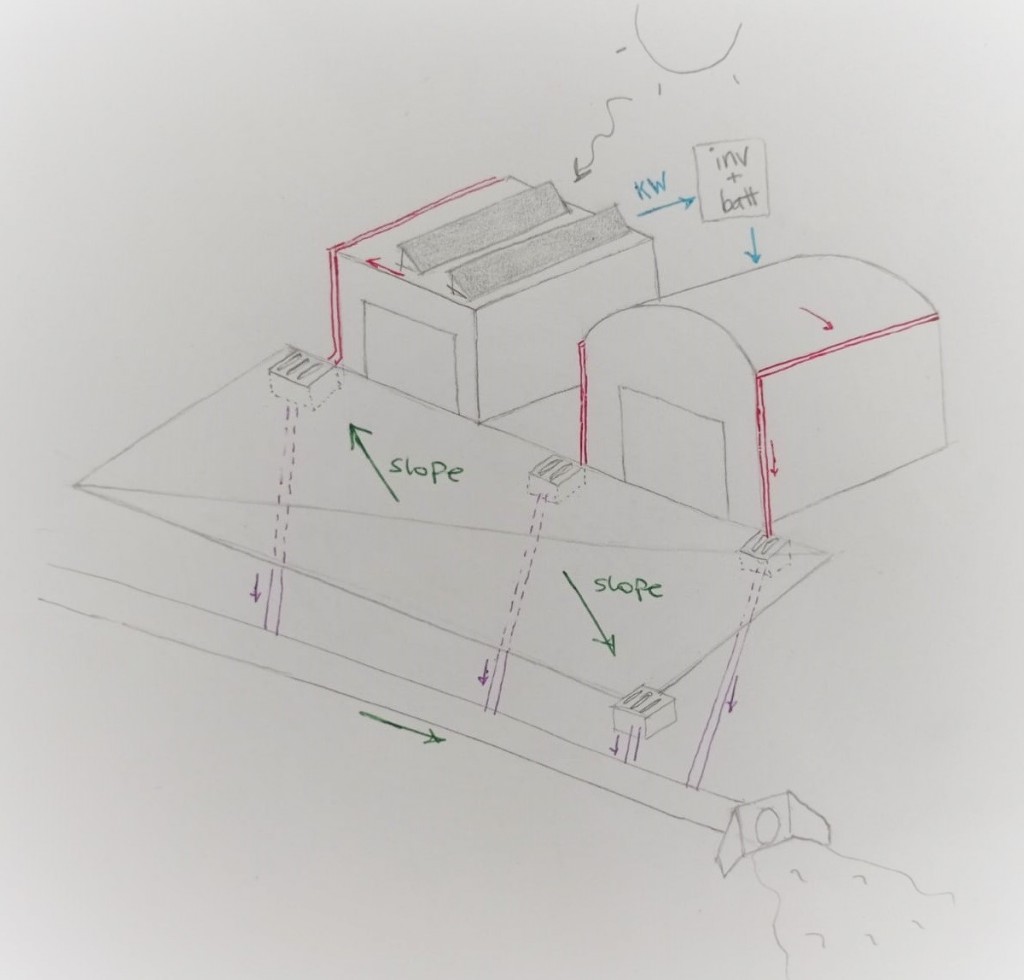Using the following four engineering systems: a warehouse, a factory, a photovoltaic power plant and a main pipe; the integrated urban system concept that has been created is the Logistics Hub. This Logistics Hub can be adapted to the production quantity, the storage capacity required, the amount of energy required and the amount of wastewater and rainwater that needs to be transported by the pipe.
The idea behind the integrated context was the creation of a space which allows the hub operators to optimize the efficiency and logistics of the hub when it comes to the manufacturing and distribution of their product. With this in mind, the warehouse and the factory were placed side-by-side, in order to minimize transport of the product as well as to minimize the area that needs to be paved. The warehouse and factory are two separate structures in order to clearly delimit the manufacturing site from the distribution site, which creates a clear logistical structure when it comes to the management of the production chain.
Another important factor of this integrated system was the requirement for sustainability. One major aspect of this is the photovoltaic power plant that has been placed on the roof of the warehouse, with a small shed at the back of the warehouse housing the battery & inverter of the power plant. Not only is photovoltaic energy more sustainable than fossil fuels, the placement of the photovoltaic panels on the roof of the warehouse also reduce the amount of sealed surfaces in the Logistics Hub. Adding to this, the higher placement of the panels on top of the warehouse means that there is a much smaller chance of nearby objects interfering with the sunlight, which in turn could mean less clearing of trees for example.
Figure 6 below shows a rough sketch of the preliminary ideas for the system’s integration:

In order to help assess the performance of the model, and to see whether the above factors were well incorporated into the considerations of the model, the following high-performance criteria were selected:
High-Performance Criteria
- High-performance Criteria: As the customer has the aim to minimize costs, one of the high-performance criteria will be to minimize the material costs. Here, the quality of the result at the end plays a significant role. The customer’s goal is not to choose the cheapest alternative, but the cheapest alternative that also meets the set high-performance criteria as far as possible.
- High-performance Criteria: One of the most important features for the customer is the sustainabilty. Therfore, the second integrated high-perfromance criteria will be to maximize the power output of the photovoltaic plant.
- High-performance Criteria: Since there is usually no ideal solution in the design process of civil systems and a compromise must be found to guarantee a high performance, the third high-performance criteria will be the balancing between the individual sub-system high-performance criteria, while also considering the integrated high-performance criteria.